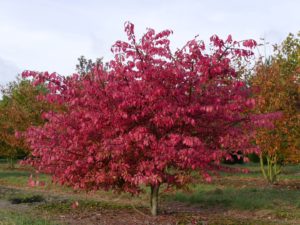Believe it or not but there are rules and regulations for naming plants. The International Code of Nomenclature for Cultivated Plants, or THE CODE, was first published in 1952 but has roots in Brussles in 1864. The Code is filled with principles, rules and regulations, recommendations, etc. Let’s just say, not the most exciting read.
These rules help guide the Latin names that are comprised of a “genus” and a “species,” which can tell us the origin of a plant or describe it’s characteristics.
Take Acer palmatum, for example. Again, ‘Acer’ means maple while the descriptive ‘palmatum’ means shaped like a hand, and it is derived from ‘platanoides,’ meaning “resembling the plane tree.” Therefore, Acer platanoides means you are looking at a maple that resembles the plane tree.
Once a new strain of that plant is developed we use a “cultivar” to describe it more specifically. So Acer palmatum ‘Blood Leaf,’ what do you think that would mean. Yes, it has leaves the color of blood. Gross, but it’s beautiful!
We rely on the specificity of these rules because common names can prove unreliable. A red maple could mean several varieties. Specifying a euonymus (so a genus with no other information) could mean you want a groundcover or a shrub.
So these rules may be a tad on the boorish side, but they are frightfully important to landscape professionals!
Donna Vignocchi Zych


